Excerpts from Jim Conrad's
Naturalist Newsletter
from the January 4, 2019 Newsletter with notes from a camping trip into Chiapas, the southernmost state of MÉXICO
DEVIL'S GUT/ DOG-TAIL/ CLIMBING CACTUS
Last October 3rd during my camping trip into Mexico's southernmost state of Chiapas, climbing a large tree trunk beside the entry station to Palenque National Park, on the road from the town of Palenque, was the cactus shown below:
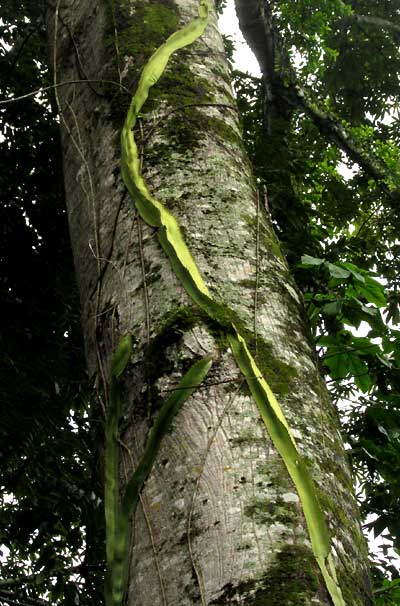
In the more arid Yucatan Peninsula to the north, commonly we see a tree-living cactus with similar stems, Hylocereus undatus, one of several cacti known as Night-blooming Cereuses, and whose reddish, large, sweet fruits are sold commercially as dragon fruits. But the stems of that cactus range throughout the trees, not attaching themselves to the tree trunk as closely as these. Plus, these stems did something the Yucatan species never does, as shown below:
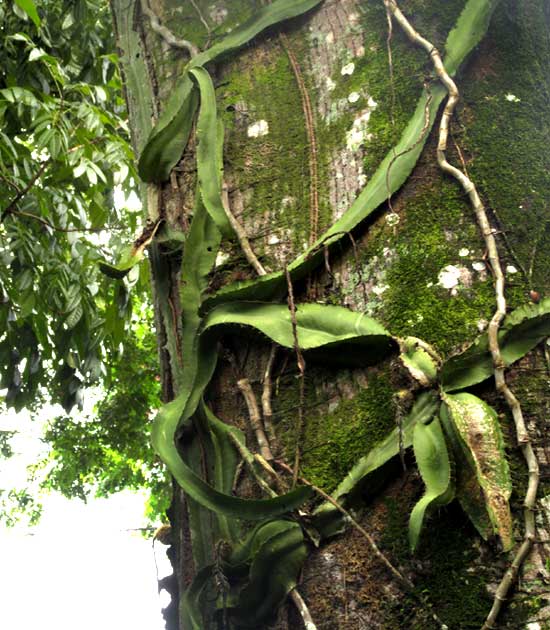
In places, our Palenque cactus's stems expanded and flattened out. Later, on a shaded limestone rock, I found the hugely expanded stem section shown below:
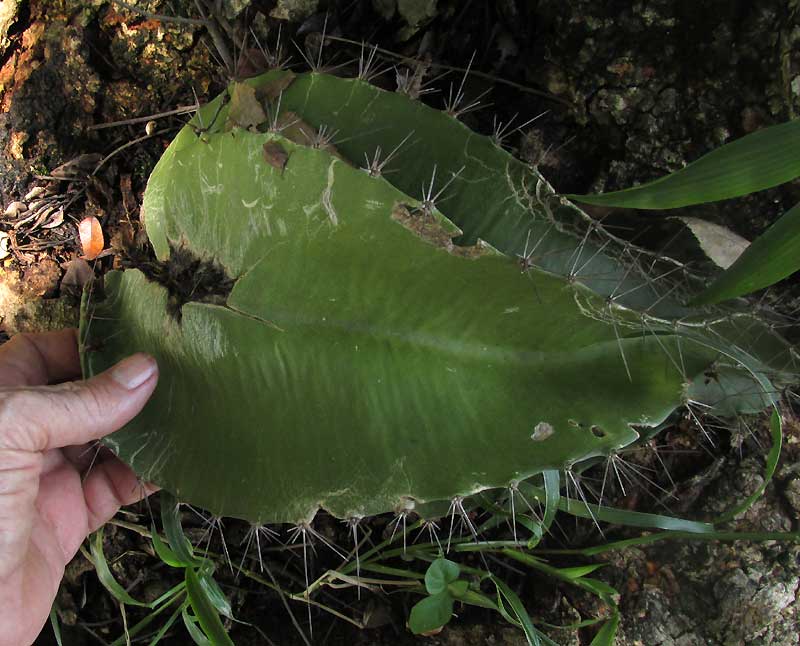
Since this was something new for me, I began photographing important field marks to help with later identification. A close-up of a stem section producing six or seven strongly angled "wings" atop which clusters of spines arose is shown below:
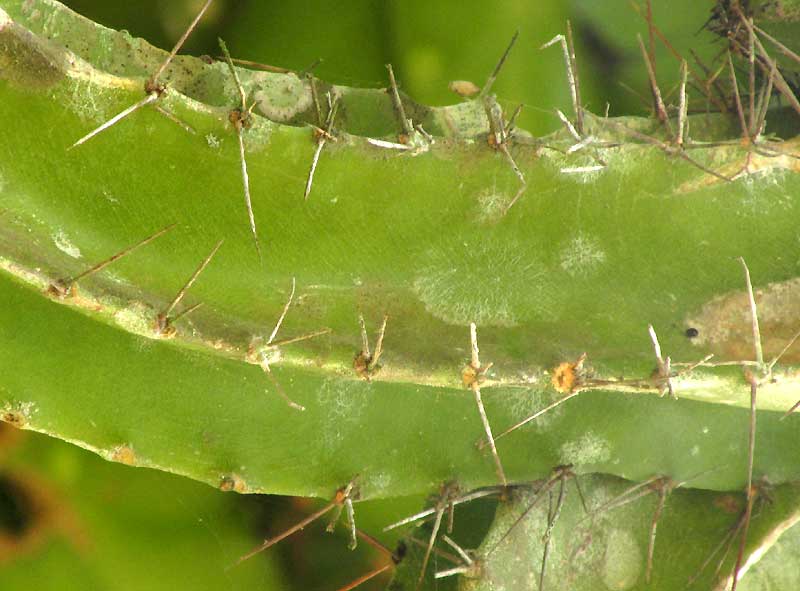
Subtle details of spine clusters often are necessary to distinguish look-alike species, so a typical cluster of hard spines often subtended by white collars of compacted, woolly hairs is shown below:
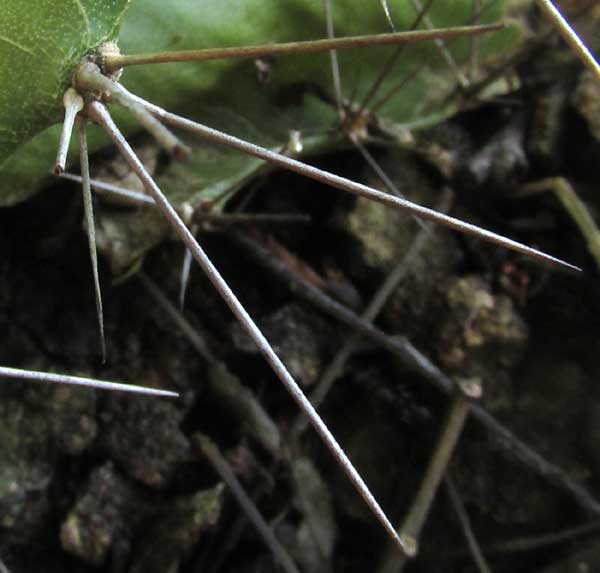
The cactus wasn't flowering but at least one well formed immature fruit was found, shown below:
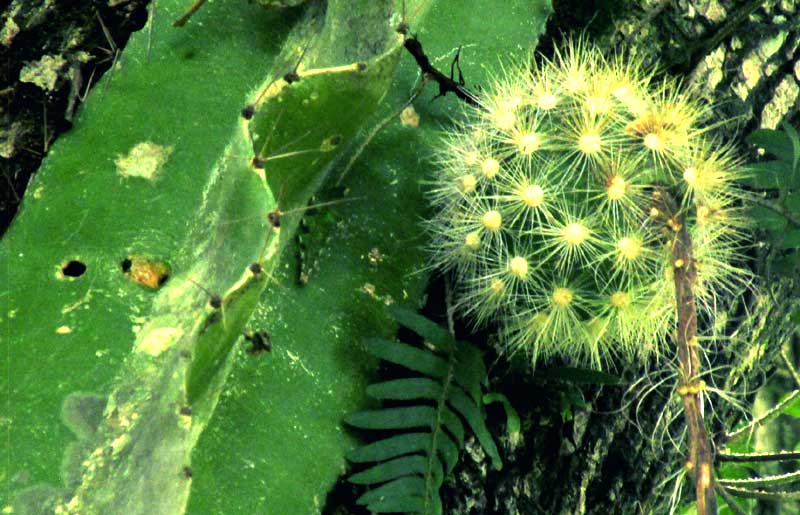
One other fruit, ripened to a golden yellow hue, later turned up on another tree, shown below:
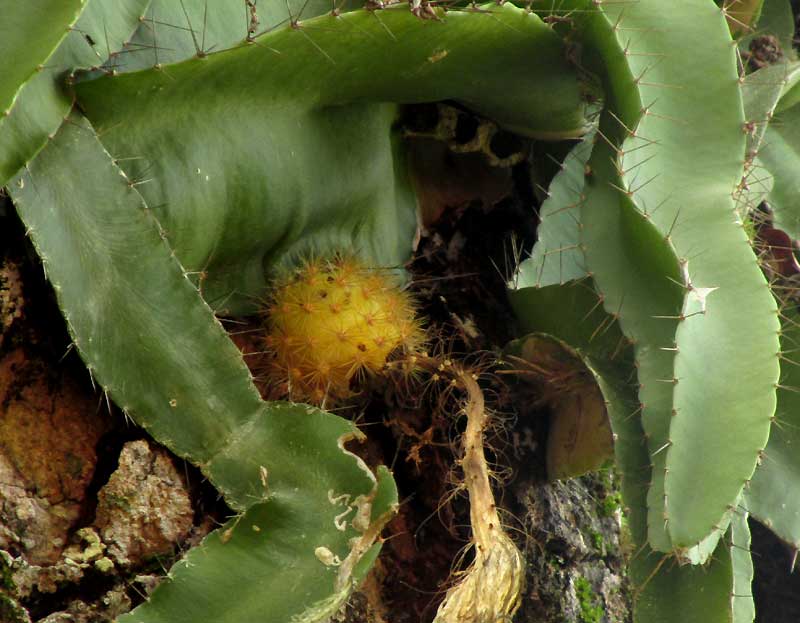
On the Internet it was easy to find pictures of this species by doing an image search on the keywords "climbing cactus Mexico." However, none of those photographs bore a technical name, the binomial. English names applied to the species seemed invented for tourist consumption. In Belize, "jungle river-tour" operators call them Dragon Guts or Devil's Guts. In other places it's "Wrap Around Cactus" or "Dog-Tail Cactus."
Using technical literature I "keyed out" the species to SELENICEREUS TESTUDO*. This surprised me because several times we've met another climbing cactus of this genus, Selenicereus grandiflora, with which you can compare our Palenque one, at www.backyardnature.net/q/rat-tail.htm
From that species and literature on the Internet I'd gained the impression that Selenicereus species bear weak, hair-like spines on finger-thick stems, very unlike our Palenque cactus. I was so insecure about the identification that I posted pictures in the identification section of the forum at the extensive and wonderful CactiGuide.Com website.
Quickly some experts responded that, yes, it really was Selenicereus testudo, just that the vast majority of photos of the species, and even much technical data, documents potted plants growing outside the tropics, where the species looks much more like our earlier-encountered Selenicereus grandiflora.
Our Palenque Selenicereus testudo species is distributed from southern Mexico (including the less arid southern Yucatan Peninsula) south to Costa Rica. Mostly it grows on trees, but sometimes is found on the ground, as was the case with the much-expanded, ±heart-shaped section shown above.
Why would Selenicereus testudo flatten out in certain instances? One reason may be that such expanded stems often form corky chambers between the stem and tree trunk, where ants nest. And ants often provide protection to plants vulnerable to feeding animals.